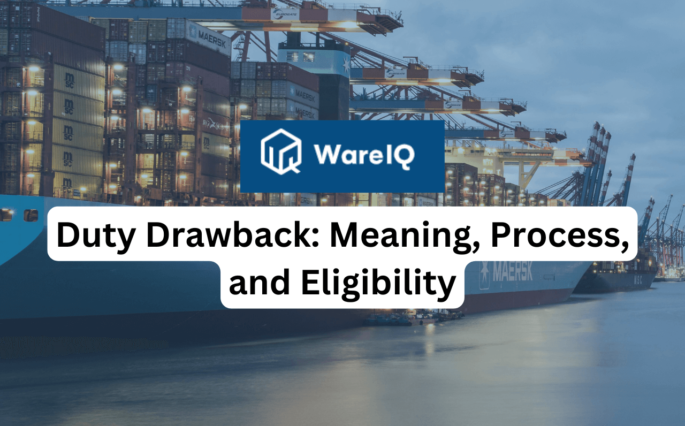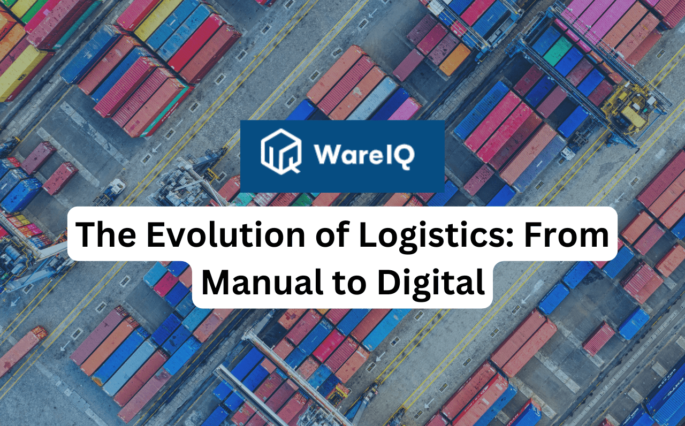What Is an IEC Code and Why Do You Need It?


In the intricate landscape of global trade, the ability to navigate through regulatory requirements is essential for businesses seeking to expand beyond domestic markets. One pivotal piece of this complex puzzle is the Importer Exporter Code (IEC). This article aims to unravel the concept of the IEC Code, shedding light on its definition, the necessity for obtaining it, the process involved in its verification, its operational significance, and the security measures associated with digital document submission platforms like e-SANCHIT in India.
As global commerce continues to evolve, the IEC stands as a testament to a business’s readiness to engage in the exchange of goods across borders, making it an indispensable asset for exporters and importers alike. Through this comprehensive guide, we will explore why the IEC Code is not just a regulatory requirement but a gateway to unlocking global market opportunities, ensuring businesses are well-equipped to navigate the complexities of international trade.
- What Is an IEC Code?
- Why Do You Need an IEC Code?
- Process of IEC Code Verification
- Is e-SANCHIT Safe in India?
- How IEC Code Tracking Works?
- Conclusion
- Frequently Asked Questions About IEC Code
- How long does it take to obtain an IEC Code?
- Can an individual apply for an IEC Code, or is it only for businesses?
- Is there an expiry date for the IEC Code?
- What documents are required for the IEC Code application?
- Can the IEC Code be cancelled or surrendered?
- Is the IEC Code required for service exports, or is it just for goods?
- How does one verify the authenticity of an IEC Code?
What Is an IEC Code?
The Importer Exporter Code (IEC) is a unique 10-digit identification number that is a prerequisite for any business looking to import or export goods in India. Issued by the Directorate General of Foreign Trade (DGFT), Ministry of Commerce and Industry, Government of India, the IEC is an essential document that legitimises a business as an authorised importer or exporter. Unlike other business registrations, the IEC Code is permanent and doesn’t require renewal, making it a one-time certification for companies to engage in international trade.
The significance of the IEC Code extends beyond its role as a regulatory document. It serves as a key to the global marketplace, allowing businesses to expand their reach beyond national borders. Without an IEC, companies in India cannot legally export their goods abroad or import goods to sell within the country. This code is linked directly to the business’s PAN (Permanent Account Number), ensuring a seamless process of verification and compliance with tax laws related to international trade. Given the expanding landscape of global commerce, possessing an IEC Code is the first step for any business aiming to tap into the international market’s vast potential.
Why Do You Need an IEC Code?
An Importer Exporter Code (IEC) is indispensable for businesses venturing into the international trade arena, serving several crucial functions that facilitate the smooth operation of export and import activities. Here’s why obtaining an IEC is essential:
1. Legal Requirement
Firstly, having an IEC is a legal mandate for engaging in import and export transactions in India. Without it, businesses are restricted from shipping goods internationally or receiving shipments from overseas, effectively limiting their operations to the domestic market.
2. Market Expansion
The IEC acts as a gateway for businesses to access and participate in global markets. It enables companies to explore new territories, diversify their product offerings, and tap into a broader customer base, contributing to business growth and increased revenue streams.
3. Customs Clearance
The IEC is required during customs clearance for both imports and exports. It verifies a business’s legitimacy and ensures compliance with international trade laws, facilitating a smoother process at customs checkpoints.
4. Foreign Remittances
When engaging in international trade, businesses often deal with foreign currency transactions. The IEC is necessary for receiving payments from overseas customers and making payments to foreign suppliers, as it’s linked to financial transactions involving foreign exchange.
5. Benefit Schemes
The Government of India and various trade bodies offer numerous schemes to promote exports from India, including subsidies, tax exemptions, and financial assistance. Possession of an IEC is often a prerequisite to avail of these benefits, making it not just a regulatory requirement but also an economic advantage for exporters.
The IEC is not merely a compliance document; it’s a critical asset for any business looking to leverage the opportunities offered by the global marketplace. It ensures that companies can operate within the legal framework, benefit from government schemes, and conduct international transactions with credibility and confidence.
Process of IEC Code Verification
The verification of an Importer Exporter Code (IEC) is a straightforward process designed to ensure the authenticity and accuracy of the IEC details for businesses engaged in international trade. Here’s a step-by-step overview of how the IEC code verification process typically works:
1. Online Verification through DGFT Portal
The Directorate General of Foreign Trade (DGFT) provides an online platform where individuals and businesses can verify IEC codes. This is the most direct method for verification, requiring you to visit the DGFT’s official website.
2. Entering IEC Details
On the DGFT portal, there is a specific section for IEC-related services, including IEC code verification. Users are required to input the 10-digit IEC number in the designated field. Additional details, such as the name of the company or its PAN, may also be required for verification purposes.
3. Submission and Results
After entering the necessary information, the verification request is submitted through the portal. The system then checks the provided IEC details against the DGFT’s database. If the information matches, the portal displays the IEC’s status and details, confirming its authenticity.
4. Physical Verification (if necessary)
In some cases, businesses or regulatory bodies may conduct physical verification by requesting a copy of the IEC certificate directly from the company for cross-verification with the DGFT’s records. This is usually done for due diligence in business transactions or regulatory compliance checks.
5. Use in Customs and Financial Transactions
Customs authorities and financial institutions often have their internal processes for IEC verification, especially during customs clearance and foreign currency transactions. They access the DGFT database directly or use the details provided by businesses to verify the IEC’s validity.
Is e-SANCHIT Safe in India?
e-SANCHIT, short for Electronic Storage and Computerised Handling of Indirect Tax documents, is a platform introduced by Indian Customs to facilitate paperless processing and uploading of supporting documents and to promote ease of doing business and transparency in the import-export process. Regarding its safety, e-SANCHIT is designed with robust security measures to protect the confidentiality and integrity of the data submitted by users. Here are key points highlighting the safety aspects of e-SANCHIT in India:
1. Government-Backed Platform
As an initiative by the Indian Customs, part of the Central Board of Indirect Taxes and Customs (CBIC), e-SANCHIT is a government-backed platform. This implies adherence to stringent data protection standards and regular audits to ensure the security of the system.
2. Secure Data Transmission
e-SANCHIT uses secure protocols for data transmission, ensuring that all information uploaded by users is encrypted. This minimises the risk of unauthorised access or data breaches, safeguarding sensitive business documents.
3. Authentication Measures
Access to the e-SANCHIT platform requires user authentication, typically through a combination of a username and password and, in some cases, digital signatures. These measures ensure that only authorised individuals can upload or view documents, enhancing the platform’s security.
4. Regular Updates and Monitoring
The platform is continuously monitored and updated regularly to address vulnerabilities and adapt to the evolving cybersecurity landscape. This proactive approach to security maintains the platform’s defence against potential cyber threats.
5. Compliance with IT Regulations
e-SANCHIT operates in compliance with India’s information technology and cybersecurity regulations, aligning with legal standards for digital platforms and data protection.
While e-SANCHIT is built with safety and security in mind, users are also advised to follow best practices for cybersecurity, such as using strong, unique passwords, keeping their login credentials confidential, and ensuring their computers are protected against malware. By combining e-SANCHIT’s robust security measures with vigilant personal cybersecurity practices, users can confidently utilise the platform for their import-export documentation needs.
How IEC Code Tracking Works?
IEC code tracking is a process that allows businesses and individuals to monitor the status of their Importer Exporter Code (IEC) application or to verify the validity of an existing IEC. This tracking capability is essential for ensuring that the IEC application process is progressing smoothly or for conducting due diligence in trade transactions. Here’s how IEC code tracking typically works:
1. Online Tracking through DGFT Portal
The Directorate General of Foreign Trade (DGFT) provides an online facility for IEC code tracking on its official website. This service enables applicants to check the status of their IEC application after submission.
2. Application Reference Number
To track the status of an IEC application, the applicant needs the application reference number, which is provided at the time of submitting the IEC application. This reference number is crucial for accessing the application’s status.
3. Status Update
Upon entering the application reference number on the DGFT portal, the system displays the IEC application’s current status. This may include stages such as “Under Process,” “Approved,” “Rejected,” or “Requires Additional Information.” This real-time update allows applicants to take necessary actions if there are any issues or delays in the processing of their applications.
4. Verification of Existing IEC
To verify an existing IEC, stakeholders such as banks, customs authorities, or business partners can use the DGFT portal or other authorised platforms to check the authenticity and validity of an IEC code. This is often done by entering the IEC number and, in some cases, additional details like the business name or PAN number.
5. Automated Alerts
Some systems may offer the option to receive automated alerts or notifications regarding the status of IEC applications. This feature ensures that applicants are promptly informed of any updates, reducing the need for manual tracking.
IEC code tracking is an important tool for businesses engaged in international trade, providing transparency and control over the application process and ensuring the validity of trade credentials. It facilitates smoother trade operations by minimising uncertainties and delays related to IEC acquisition and verification.
Conclusion
The Importer Exporter Code (IEC) emerges as a fundamental cornerstone for businesses engaging in international trade, encapsulating a broader narrative of global commerce facilitation. As delineated in this comprehensive exploration, the IEC not only serves as a regulatory mandate but also paves the way for enterprises to seamlessly integrate into the global market, highlighting its indispensable role in the architecture of international trade. From its application and verification process to the nuances of e-SANCHIT’s secure digital document submission platform in India and the operational mechanics of IEC code tracking, each facet of the IEC ecosystem contributes to simplifying the complexities of global commerce.
The IEC stands as a beacon of efficiency, security, and compliance, indispensable for businesses aiming to navigate the intricate landscape of international trade with agility and confidence. It underscores the evolving dynamics of global trade practices, emphasising the criticality of embracing digital advancements and adhering to regulatory frameworks to foster a conducive environment for trade and commerce. As businesses and individuals continue to leverage these tools and processes, the pathway to global market participation becomes increasingly accessible, underscoring the profound impact of the IEC in the broader narrative of international commerce.
Frequently Asked Questions About IEC Code
How long does it take to obtain an IEC Code?
The processing time for obtaining an IEC Code can vary. Still, typically, the Directorate General of Foreign Trade (DGFT) issues the IEC within 3 to 7 working days after receiving a correctly filled application, provided there are no discrepancies or additional information required.
Can an individual apply for an IEC Code, or is it only for businesses?
Both individuals and businesses can apply for an IEC Code as long as they intend to engage in import or export activities. Freelancers and sole proprietors involved in international trade also need to secure an IEC.
Is there an expiry date for the IEC Code?
No, the IEC Code does not have an expiry date. Once obtained, it is valid for the lifetime of the entity unless revoked or surrendered. This makes it a one-time registration and compliance requirement for importers and exporters.
What documents are required for the IEC Code application?
The primary documents required include a PAN card (for the individual/business), proof of address, and a bank certificate or cancelled cheque bearing the entity’s name pre-printed on it. Additional documents might be required based on specific cases or updates in DGFT regulations.
Can the IEC Code be cancelled or surrendered?
Yes, if a business or individual decides to discontinue import/export activities or close the industry, the IEC Code can be surrendered. The DGFT provides a procedure for the cancellation or surrender of the IEC, which involves submitting a request along with necessary documents for deactivation.
Is the IEC Code required for service exports, or is it just for goods?
The IEC Code is required for the export of services as well as goods. Any earnings in foreign exchange, irrespective of the nature of the service, require the service provider to have an IEC.
How does one verify the authenticity of an IEC Code?
The DGFT portal offers an online IEC verification tool. Anyone can enter the IEC number to check its validity and view the details of the IEC holder. This tool is crucial for verifying the authenticity of business partners in international trade.








